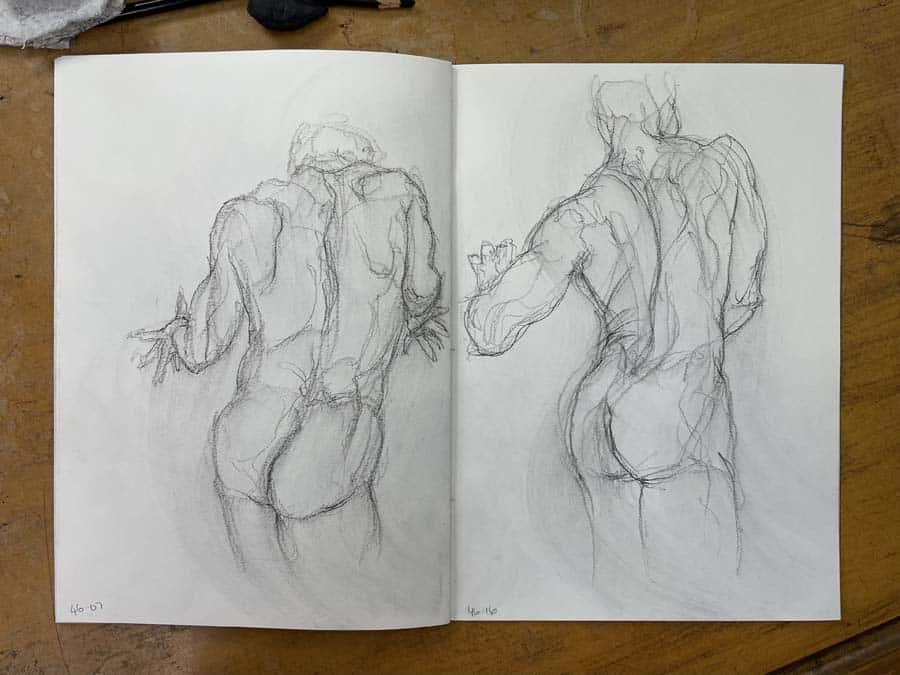My mission this month has been to refresh my studio practice with some intensive drawing, examining movement and gesture, refilling my visual memory in preparation for new work. I’m your classic easily distracted arty type so I recognised that I needed a defined challenge to stay focused. I gave myself boundaries then just tried to fill the sketchbooks and stay with it, enjoying the meditative process of drawing.

After working from the life model for a while, I turned to my extensive archive of photos and video from my years of tree-hunting. While there are 1000s of images to get lost in, I had just a few individual trees in mind which lend themselves to this project.

This particularly contorted beech at Aden Country Park, Aberdeenshire was an obvious choice and I easily filled a whole sketchbook.

The more I draw this tree the weirder it seems, the bizarre contortions of the trunk not looking at all ‘tree-like’. There’s definitely no shortage of movement in its growth – I saw all sorts of body bits in there as I tried to capture the movement I imagined it’s made over the centuries.

This veteran oak at Dalkeith Country Park has seen many centuries pass and the time I spent with it was just the tiniest of blips in its lifespan.

Ancient oak trees are so immensely complex that it’s hard to know where to start drawing them. Over the years I’ve spent with them I’ve gradually focused on some features that excite me – their lean and twist, the sculptural burrs, their hollows and crevices.

Making a drawing is a process of editing right from the start. That’s why a drawing can capture an experience in a uniquely personal way.
 I’ll be teaching my ‘Permission to Draw’ course again soon, so email me if you’d like me to show you how to draw too.
I’ll be teaching my ‘Permission to Draw’ course again soon, so email me if you’d like me to show you how to draw too.
Here’s a quick glimpse of an oak drawing in progress.
View this post on Instagram